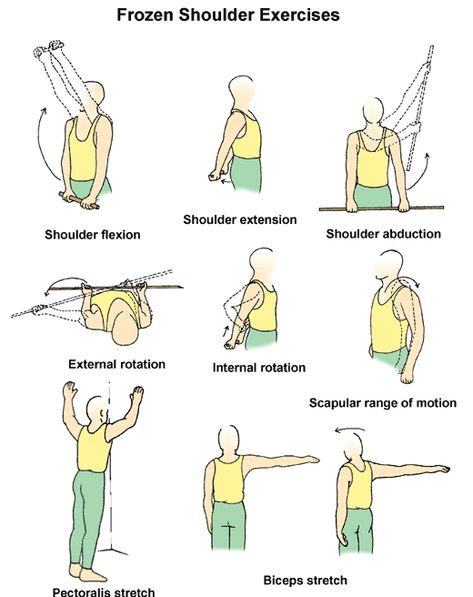Whether you’re an athlete, office worker, or recovering from an injury, shoulder flexibility plays a crucial role in your ability to move freely and stay pain-free. Stiff shoulders can affect posture, cause discomfort, and limit your daily activities like reaching overhead or behind your back.
The good news? With the right stretching and mobility exercises, you can increase shoulder flexibility, reduce stiffness, and improve overall joint function.
Why Shoulder Flexibility Matters
The shoulder joint is one of the most mobile yet complex joints in the body. Poor flexibility can lead to:
- Limited range of motion
- Pain during movement
- Increased risk of injuries (like rotator cuff tears or impingement)
- Poor posture and neck strain
Maintaining or improving flexibility ensures smooth and pain-free shoulder motion during everyday tasks and physical activities.
Best Shoulder Flexibility Exercises
Here are the most effective exercises designed to improve shoulder range of motion, muscle balance, and joint mobility. These exercises can be done at home and require minimal equipment.
1. Cross-Body Shoulder Stretch
How to do it:
- Stand or sit up straight.
- Bring one arm across your chest.
- Use the opposite hand to gently pull the arm closer to your chest.
- Hold for 20–30 seconds.
- Repeat on both sides.
Benefits:
Stretches the rear deltoid and shoulder capsule; great for daily flexibility.
2. Shoulder Circles
How to do it:
- Stand tall with arms extended to the sides.
- Make small circular motions with both arms.
- Gradually increase the size of the circles.
- Do forward circles for 20 seconds, then backward.
Benefits:
Warms up the shoulder joint and improves rotator cuff mobility.
3. Wall Crawls (Finger Walks)
How to do it:
- Stand facing a wall.
- Place your fingertips against the wall at shoulder height.
- Slowly “walk” your fingers up the wall as high as possible without pain.
- Hold for a few seconds, then walk them back down.
- Repeat 5–10 times.
Benefits:
Improves overhead range of motion and helps with post-injury mobility.
4. Sleeper Stretch
How to do it:
- Lie on your side with your affected shoulder down.
- Bend your elbow to 90 degrees.
- Use your opposite hand to gently press the forearm down toward the floor.
- Hold for 20–30 seconds.
Benefits:
Targets the posterior capsule, often tight in athletes or post-injury.
5. Doorway Stretch
How to do it:
- Stand in a doorway with your arms on each side of the frame, elbows at shoulder height.
- Step forward with one foot while gently pressing your chest forward.
- Hold for 20–30 seconds.
Benefits:
Stretches the pectoralis major and minor muscles, promoting better posture and opening up the chest and shoulders.
6. Towel Stretch (Overhead Reach)
How to do it:
- Hold a towel behind your back with one hand overhead and the other hand from below.
- Gently pull the towel with your top hand, stretching the lower shoulder upward.
- Switch sides and repeat.
Benefits:
Improves internal and external rotation, crucial for reaching behind your back.
7. Thread the Needle Pose
How to do it:
- Start on all fours.
- Slide one arm under your body and reach across to the opposite side.
- Lower your shoulder and ear to the floor.
- Hold for 20–30 seconds, then repeat on the other side.
Benefits:
Increases thoracic spine and shoulder mobility, reduces upper back tension.
8. Pendulum Stretch
How to do it:
- Lean forward with one hand supported on a table or chair.
- Let your opposite arm hang freely and swing it gently in circles or side-to-side.
- Perform for 1–2 minutes.
Benefits:
Relieves pressure, improves joint lubrication, and increases motion in stiff shoulders.
Tips for Effective Shoulder Stretching
- Warm up first: Do light cardio or arm swings before stretching.
- Hold each stretch: Aim for 20–30 seconds, without bouncing.
- Breathe deeply: Helps muscles relax and increases the stretch.
- Avoid pain: Stretch to the point of tension, not pain.
- Be consistent: Practice flexibility exercises 3–5 times a week for best results.
When to See a Doctor
Consult a healthcare professional if:
- You experience sharp or persistent pain
- There’s swelling or instability
- You’ve had a recent shoulder injury or surgery
Proper diagnosis is essential before starting any new exercise routine, especially if you have underlying shoulder conditions.
Conclusion
Improving shoulder flexibility is not just about preventing pain — it’s about unlocking your full range of motion for better posture, performance, and everyday comfort. These simple yet powerful exercises can go a long way in keeping your shoulders healthy and mobile.
Incorporate them into your routine and feel the difference!
Disclaimer: This article is for informational purposes only and is not a substitute for professional medical advice. Always consult a physiotherapist or orthopedic specialist before beginning any exercise program.
